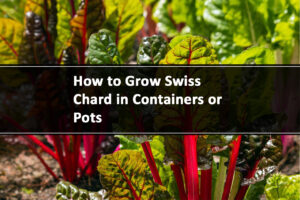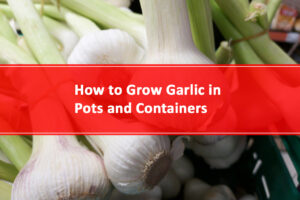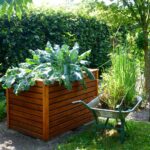Beautiful Plants For Your Interior
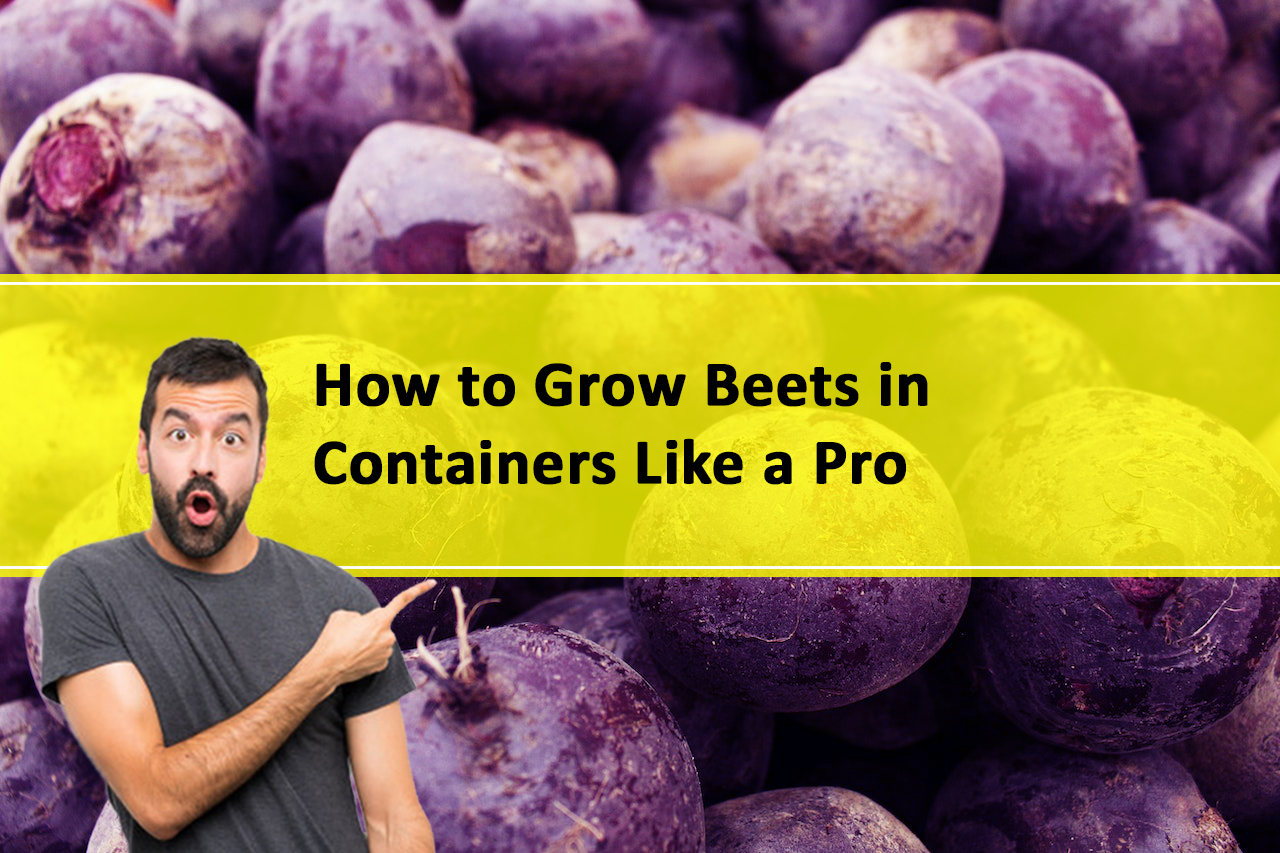
How to Grow Beets in Containers Like a Pro
Growing beets in containers not only saves space but also offers a rewarding experience for both beginners and seasoned gardeners. Whether you have a small balcony, a tiny patio, or even just a sunny windowsill, you can enjoy the pleasures of homegrown beets. Let’s explore the step-by-step process of how to grow beets in containers, backed by examples and expert advice.
Before we dive into the details, let’s understand why growing beets in containers is an excellent choice. Container gardening allows you to overcome space constraints, making it accessible for urban dwellers or those with limited outdoor space. Additionally, it provides better control over soil quality, drainage, and sunlight exposure, ensuring optimal growth conditions for your beets. With the right techniques, you can enjoy a bountiful harvest of fresh, organic beets right from your container garden.
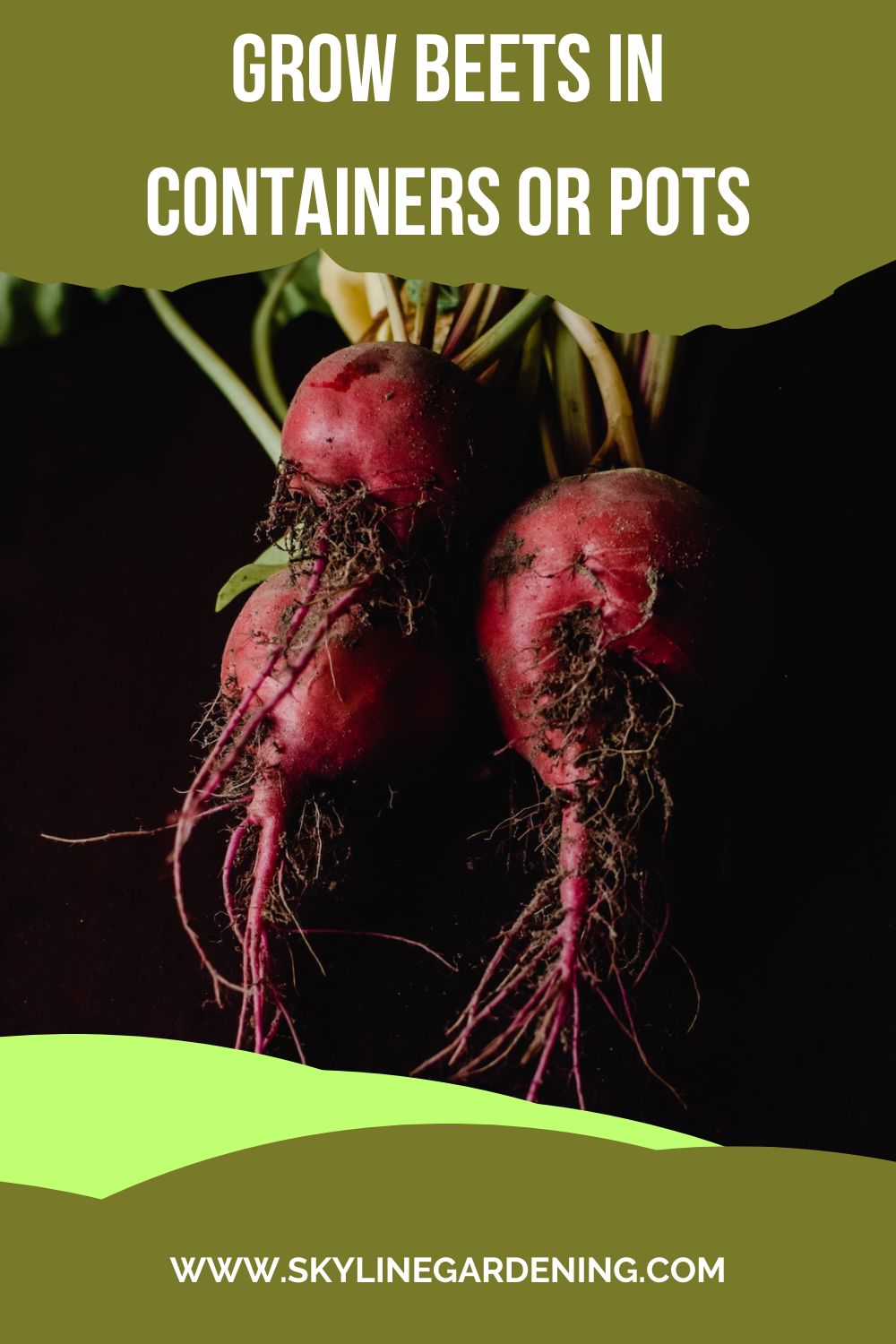
How to Grow Beets in Containers
In this comprehensive guide, we will delve into the art of cultivating one of the healthiest and most versatile vegetables in containers – beets.
Choosing the Right Container:
The first step in successfully growing beets in containers is selecting the suitable container. Opt for pots or containers that are at least 12 inches deep to accommodate the beet’s long taproot. Ensure the container has drainage holes at the bottom to prevent waterlogging, which can lead to root rot. The suitable containers for beets include:
Large Plastic Pots:
- Use: Plastic pots are lightweight, durable, and come in various sizes and shapes.
- Plants: Flowers like geraniums, petunias, or marigolds; herbs like basil, mint, or parsley; small shrubs like hydrangeas or dwarf varieties of roses.
Wooden Boxes:
- Use: Wooden boxes provide a rustic look and can be customized in size and design.
- Plants: Herbs and edible plants like tomatoes, lettuce, or peppers; decorative plants like succulents or ornamental grasses; small flowering plants like pansies or begonias.
Ceramic Planters:
- Use: Ceramic planters are decorative and come in various colors and designs, adding aesthetic appeal to your garden.
- Plants: Ornamental plants like orchids, ferns, or snake plants; flowering plants like orchids or peace lilies; succulents and cacti.
Selecting the Perfect Beet Variety:
Beets come in various shapes, sizes, and colors, offering a delightful range of options for your container garden. The best beet varieties suitable for container gardening include:
Detroit Dark Red:
Detroit Dark Red beets are classic, globe-shaped beets with deep red flesh and a sweet, tender flavor. This variety adapts well to container gardening due to its compact size and can thrive in pots or deep containers. If you prefer traditional, sweet beets, Detroit Dark Red is an excellent choice.
Boltardy:
Boltardy beets are known for their resistance to bolting (going to seed prematurely) and have smooth skin with dark red flesh. Boltardy beets are suitable for containers, especially if you are dealing with limited space, as they don’t take up much room. If you want a reliable beet variety that is less likely to bolt, Boltardy is a good option.
Chioggia (Candy Cane Beets):
Chioggia beets are visually striking with red and white rings inside, resembling a candy cane. They have a mild, sweet flavor. Chioggia beets can be grown in containers, adding a colorful and unique touch to your garden. If you enjoy experimenting with visually appealing and mildly flavored beets, Chioggia is a fun choice.
Quality Soil and Proper Drainage:
The foundation of successful container gardening lies in the quality of the soil. Choose a well-draining potting mix rich in organic matter. The best potting mix for beet include:
Basic Potting Mix:
- Garden Soil: Provides a base for the mix. Ensure it’s well-draining and free from pests and diseases.
- Compost: Adds nutrients to the soil and improves its structure. Compost also helps retain moisture without causing waterlogging.
- Perlite: Increases drainage and aeration. Perlite is a lightweight, volcanic mineral that prevents compaction of the soil, allowing roots to breathe.
Enhancing Drainage:
- Gravel or Broken Clay Pots: Placing a layer of gravel or broken clay pots at the bottom of the container can create a reservoir for excess water, preventing water accumulation at the bottom of the pot. This layer allows excess water to move away from the roots, reducing the risk of root diseases due to waterlogging.
- Sand: Mixing coarse sand into the potting mix can further enhance drainage, especially for plants that require excellent drainage, such as cacti and succulents.
- Mulch: After planting, applying a layer of organic mulch on top of the soil surface can help retain moisture while allowing excess water to evaporate. Mulch also acts as a barrier, preventing soil compaction and erosion.
Planting Beets in Containers:
Now that you have the right container, beet variety, and soil mix, it’s time to plant your beets. Sow beet seeds directly into the container, following the guidelines on the seed packet. Plant the seeds about 1 inch apart and ½ inch deep. The important planting tips include ensuring proper spacing between seeds to allow adequate room for growth and avoiding overcrowding, which can lead to stunted beets.
- Reason: Adequate space between seeds allows each plant to access sufficient nutrients, sunlight, and water. When plants are overcrowded, they have to compete for these essential resources, leading to stunted growth and smaller yields.
- Guideline: Follow the recommendations on the seed packet for the specific plant variety you’re growing. Different plants have different spacing requirements. For beets, planting seeds about 1 inch apart in rows is a common guideline.
Sunlight and Watering Requirements:
Beets thrive in full sunlight, so place your containers in a location that receives at least 6 to 8 hours of direct sunlight daily. Sunny balconies, patios, and windowsills are excellent spots for growing beet plants, especially because beets typically require plenty of sunlight to thrive. Additionally, consistent and proper watering is key to their healthy growth.
Suitable Growing Spots:
- Sunny Balconies, Patios, or Windowsills: Beets need at least 6-8 hours of direct sunlight each day. Placing your containers in sunny spots ensures they receive adequate sunlight for optimal growth.
Consistent Watering:
- Importance: Beets require consistent moisture, especially during the germination and root development stages. Inconsistent watering can lead to irregular growth and deformed roots.
- Guideline: Keep the soil consistently moist but not waterlogged. Check the moisture level regularly by feeling the top inch of the soil. Water when it feels dry to the touch, ensuring the water penetrates the root zone.
Proper Watering Techniques:
- Use of a Watering Can with a Gentle Shower Nozzle: Using a watering can with a gentle shower nozzle helps in providing a soft and even flow of water.
- Preventing Soil Erosion and Seedling Damage: A gentle flow of water prevents soil erosion and avoids damaging delicate seedlings. Water at the base of the plants to ensure water reaches the roots where it’s needed most.
Thinning and Maintenance:
As your beet seedlings grow, thin them out to maintain proper spacing. Thinning is essential to ensure each beet plant has enough space to develop a robust root system. Best thinning techniques include gently removing excess seedlings, and leaving behind the strongest and healthiest plants. Regularly inspect your beet plants for signs of pests or diseases, such as aphids or powdery mildew, and address them promptly using organic pest control methods.
Fertilization and Feeding:
To support healthy growth, consider feeding your container-grown beets with a balanced fertilizer. The best suitable fertilizers include organic options like compost tea or well-rotted manure. Be mindful of the specific fertilizer requirements of the beet variety you are growing. Avoid over-fertilizing, as excessive nutrients can lead to lush foliage but underdeveloped roots.
Harvesting Your Container-Grown Beets:
The excitement of container gardening culminates in the harvest. Beets are typically ready for harvest 50 to 70 days after planting, depending on the variety. Signs that your beets are ready for harvest include the emergence of the beet shoulders above the soil line. To harvest, gently loosen the soil around the beet and pull it out, taking care not to damage the root. Examples of harvesting tips include harvesting beets when they are young and tender for the best flavor and texture.
Creative Culinary Uses for Your Homegrown Beets:
Now that you have successfully grown beets in containers, it’s time to reap the culinary rewards. Beets are incredibly versatile and can be used in various dishes. Examples of creative culinary uses for your homegrown beets include salads, soups, smoothies, and even desserts. Experiment with beetroot recipes to enjoy the full spectrum of flavors and nutritional benefits this vibrant vegetable offers.
Growing Beetroot From Seed
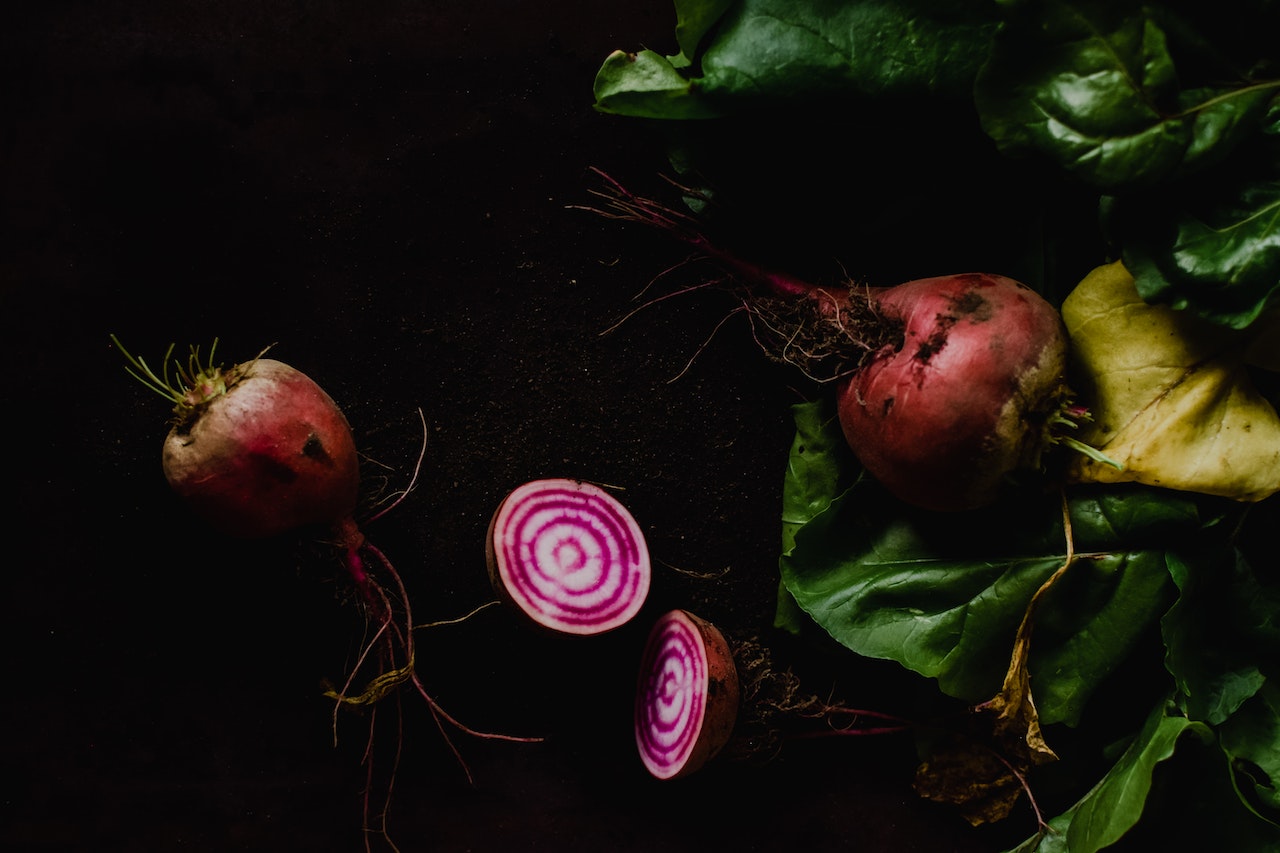
Growing beetroot from seed is a satisfying and rewarding experience that allows you to enjoy fresh, homegrown beets straight from your garden. Whether you have a spacious backyard or a tiny balcony, you can successfully cultivate beetroot from seeds by following these steps:
-
Gather Your Supplies:
– Beetroot seeds of your preferred variety
– Well-draining potting soil or compost
– Containers or garden beds with adequate depth (at least 12 inches)
– Watering can or garden hose with a gentle spray nozzle
– Garden trowel
– Organic fertilizer (optional)
– Mulch (such as straw or shredded leaves) to retain moisture and suppress weeds -
Choosing the Right Beetroot Variety:
There are various beetroot varieties to choose from, each offering unique flavors, colors, and sizes. Some popular varieties include ‘Detroit Dark Red,’ ‘Boltardy,’ and ‘Chioggia.’ Select a variety that suits your taste preferences and garden conditions.
-
Preparing the Soil:
Beetroot thrives in well-draining, loose soil enriched with organic matter. Prepare the soil by loosening it to a depth of at least 12 inches. If your soil is clay-heavy, consider adding sand or compost to improve drainage. Well-draining soil prevents waterlogging, which can cause the beets to rot.
-
Sowing Beetroot Seeds:
Plant beetroot seeds directly into the prepared soil or containers. Sow the seeds about 1 inch apart and ½ inch deep. Space rows about 12 to 18 inches apart. Cover the seeds lightly with soil and water gently to keep the soil moist. Avoid overwatering, as it can dislodge the seeds.
-
Sunlight and Watering:
Place the planted seeds in an area that receives at least 6 to 8 hours of sunlight daily. Beetroots thrive in full sun. Water the seeds consistently to keep the soil evenly moist. Use a gentle spray nozzle to prevent soil erosion and disturbance to the seeds. Beets prefer consistent moisture, so do not let the soil dry out completely between waterings.
-
Thinning Seedlings:
Once the beet seedlings are a few inches tall and have developed true leaves, thin them to ensure proper spacing. Thin the seedlings to stand about 3 to 4 inches apart. Thinning is crucial to allow beets enough room to grow and develop into healthy roots.
-
Fertilizing (if needed):
If your soil lacks nutrients, consider feeding your beetroot plants with organic fertilizer, such as compost or well-rotted manure. Follow the package instructions for application rates, and avoid over-fertilizing, as excessive nutrients can lead to lush foliage but small roots.
-
Mulching and Weeding:
Apply a layer of mulch around the beetroot plants to conserve moisture, regulate soil temperature, and suppress weeds. Mulching also prevents soil from splashing onto the leaves, reducing the risk of disease. Regularly remove weeds around the beet plants, as they compete for nutrients and water.
-
Harvesting Beetroot:
Beetroots are typically ready for harvest 50 to 70 days after planting, depending on the variety. Harvest young beets for a tender and sweet flavor. Gently loosen the soil around the beetroot and pull it out. Be careful not to damage the roots. Remove the tops (greens) about 1 to 2 inches above the root after harvest to prevent the beets from drying out. The tops are edible and can be used in salads or sautéed.
-
Storing Beetroot:
Freshly harvested beetroots can be stored in a cool, dark place for several weeks. Remove any excess soil and store them in a perforated plastic bag in the refrigerator for longer shelf life.
People also ask:
-
What size of container do I need for growing beets?
Opt for containers that are at least 12 inches deep and have a diameter of 18 inches. This size provides ample space for the beet’s taproot to grow without restrictions.
-
How often should I water my container-grown beets?
Beets need consistent moisture, so water them whenever the top inch of soil feels dry. Typically, this means watering every 2-3 days, but it can vary based on your climate and the size of the container.
-
Can I use regular garden soil for my container-grown beets?
It’s better to use a well-draining potting mix or a blend of garden soil, compost, and perlite for container-grown beets. Regular garden soil may not provide adequate drainage, which is crucial for the health of your beets.
-
How long does it take for beets to grow from seeds to harvest?
Beets usually take between 50 to 70 days from planting to harvest, depending on the variety. Always check the seed packet for the specific days to maturity for the variety you’re growing.
-
Do beets need full sunlight to grow in containers?
Yes, beets thrive in full sunlight. Ensure your container is placed in a location where it receives at least 6 to 8 hours of direct sunlight daily for optimal growth.
-
Can I reuse the potting mix from my containers for the next planting season?
Yes, you can reuse the potting mix with proper amendments. Remove the old plant roots, add compost, and fluff up the soil to refresh it. However, avoid reusing soil that previously grew diseased plants.
-
When is the best time to harvest beets?
Beets are best harvested when they are young and tender, usually between 1.5 to 3 inches in diameter. You can leave them in the ground a bit longer, but overly mature beets might become woody.
Final Words on How to Grow Beets in Containers
Container gardening opens up a world of possibilities for growing your favorite vegetables, including beets. By following the steps outlined in this guide and learning from the examples provided, you can successfully grow beets in containers, regardless of your gardening experience or available space. Embrace the joys of nurturing your beet plants from seeds to harvest, and savor the delicious rewards in your culinary creations.
Growing beets in containers is a fulfilling and rewarding experience that brings the freshness of the garden to even the smallest of spaces. With the right container, soil, sunlight, and care, you can transform your limited outdoor area into a thriving beet garden. So, whether you’re a beginner exploring the wonders of gardening or a seasoned enthusiast seeking new challenges, start your container gardening journey today and enjoy the bountiful harvest of homegrown beets.

